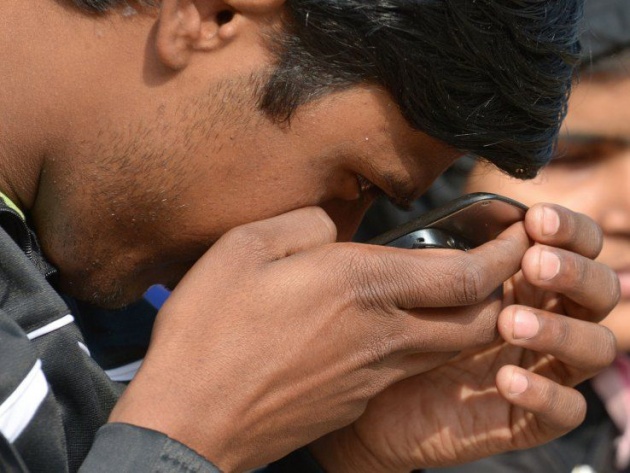
How many of us have been tempted to chuck our smartphones into the ocean while on vacation to stop the incessant buzzing of incoming emails and texts from interrupting what is supposed to be down time?
While many of us have become increasingly desperate to unplug – there’s even a growing industry of “digital detox” vacation spots – in our love-hate relationship with our smartphones, love ultimately conquers all.
We wouldn’t dream of cutting the cord for more than a day or two max. After all, mobile connectedness has become so critical to modern life that according to research by the Bill & Melinda Gates Foundation, even people living on less than $2 a day reported owning a mobile phone – cutting back on food purchases if necessary.
But while our smartphones have practically become an extension of our body, an entire population has been left behind. A huge swath of the disabled community – quadriplegics, ALS patients, people with cerebral palsy to name a few – have never used a smartphone to dial, text, browse or read emails, let alone post on Facebook, play a game or download an app.
Our phones, regardless of income level, age or gender, are largely viewed as the primary enablers of our social lives, professional careers, and a major source of entertainment. In other words, a phone is hardly just a phone anymore.
How a Phone Call Changed My Life
About three years ago, my phone rang, and on the other end was a voice that would change the course of my professional journey. At the time, I was a video game developer and had just appeared on a TV show to demo a gesture-controlled game for the iPhone.
Calling me was literally impossible for the man on the other end of the line; he needed outside assistance because he could not hold a phone or dial on his own. When Giora Livne introduced himself, he explained how an accident several years back had left him a quadriplegic. An electrical engineer by trade, Giora realized when watching me on TV that gesture technology could be used to empower people like him.
“This might sound a bit forward,” Giora had said as he recruited me to team up with him to develop the first touch-free smartphone. Over the next few months, we planned and launched Sesame Enable, to build a hands-free smartphone that is operated by head movements, so those with paralysis or limited hand use can operate it just as anyone else would.
Until the moment I got that call from Giora, I had assumed smartphones were a luxury.
Many of us have reached a saturation point in our digital consumption and are pushing for an offline existence. Encouragement by Danah Boyd, a senior Microsoft researcher and author, advises on “How to Take an Email Sabbatical,” as does Randi Zuckerberg, who advocates a “Digital Sabbath.” People are trying so hard to unplug, desperate to find solitude in an era of constant connection, while others, like Giora, never had the opportunity to plug-in in the first place.
The Gap Keeps Widening
As the technology becomes more ubiquitous for us, the disabled are left further and further behind.
“Mobile communications is part of the structural part of society,” says Scott Campbell, Pohs Professor of Telecommunications at the University of Michigan. Scott names three advantages to having a smartphone: security and safety; the ability to coordinate everyday activities; and the chance to be social.
Turns out, it’s that last point that resonates loudest with our beta testers. I was sure they’d want the phone for practical reasons. And, yes, they tell me that’s part of the point. But more than anything, they want to have a private phone conversation (Giora hadn’t had a private call in years) and the teens and kids I’ve met wanted to play Candy Crush (the smile on beta tester Ori’s face is priceless) or browse Facebook, just like all their friends.
Other innovators are also taking note.
Last year the Motion Savvy Uni was introduced to improve lines of communication for the deaf. This first-of-its-kind tablet device translates sign language into audio, and spoken word to text. Using voice recognition technology, Uni identifies audible speech and converts it to text for deaf and hard of hearing individuals. And with motion gesture recognition technologies, the device translates signs into audible speech for hearing individuals.
Responding to the needs of millions, Project Ray developed the world’s first completely vision-free smartphones for the blind, powered by touch, voice and sound controls. These specially designed phones enable the blind to make phone calls, read and send text messages and emails, set calendar reminders, use GPS navigation, utilize remote assistance, color identification tools, picture transcription and more.
So, while we might get frustrated by our phones and wish to disconnect and drop out, I’m happy to have met Giora and realized that to so many among us, smartphones and tablets are not merely unnecessary luxuries. The most transformative technological device of the past decade should be able to touch the lives of everyone, including those that cannot physically touch the device themselves. After all, it is they who need it most.



